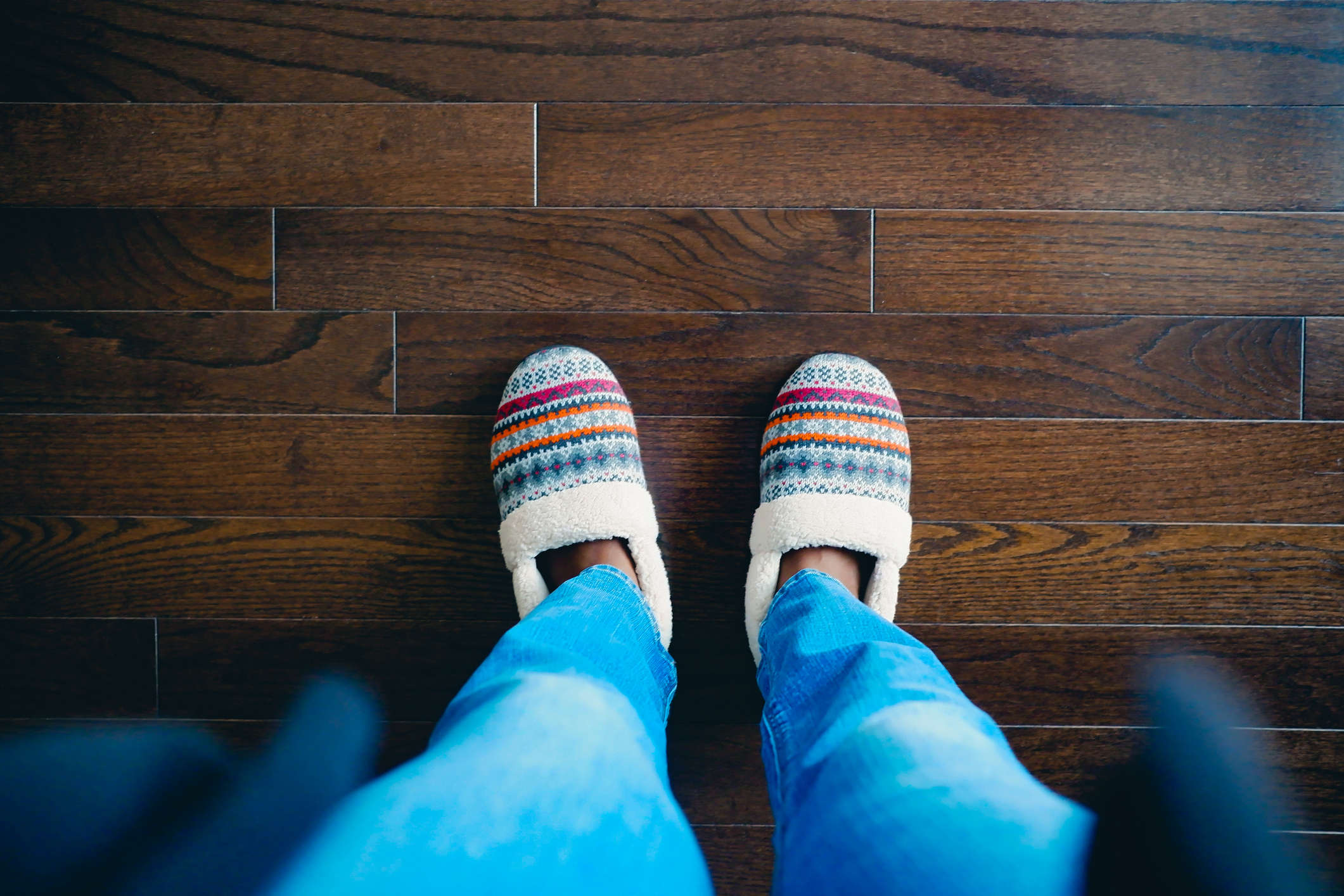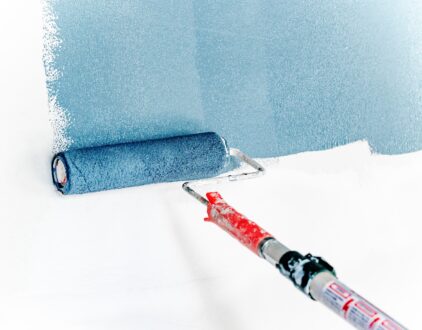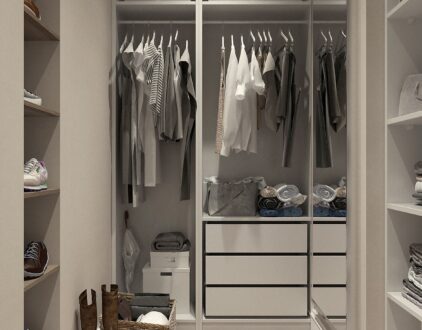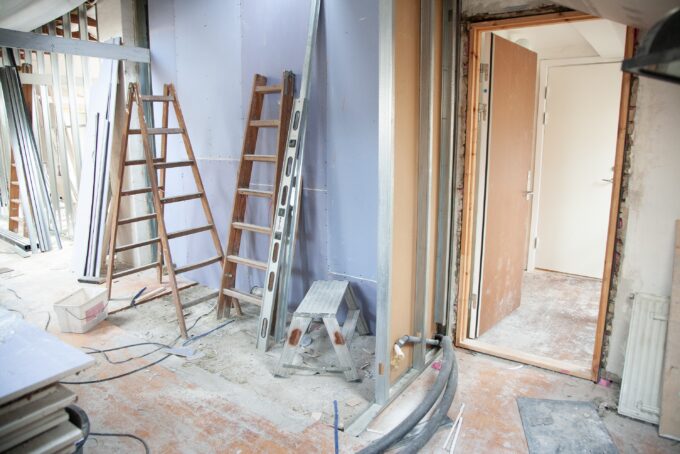There are few things more jarring than getting out of bed in the morning and stepping on icy cold floors that send chills up your spine. You could deck out your entire place in rugs, get some additional heaters, or invest in some thick fuzzy socks, but there is an alternative: heated floors. It sounds futuristic and super cozy but this is a major renovation, so there’s plenty to think about. Here’s what you need to know to help you decide if it’s the right choice for you and your home.

Energy Efficiency at Its Finest
Contrary to popular belief, heated floors are not energy guzzlers. In fact, they’re incredibly efficient when paired with modern thermostats and zoning systems. By heating rooms only when needed, you can optimize energy usage and reduce utility bills without sacrificing comfort. It’s a win-win situation for both your wallet and the environment.
Easy Installation and Maintenance
You might think that installing heated floors is a complicated and messy process. While it will take time, it’s a straightforward process. Here’s an idea of what taking on this project would look like:
Assessment and Planning
Step one is to assess your home’s layout and determine the best areas for installing heated floors. Consider factors such as room size, flooring type, and existing heating systems. A professional installer will work with you to create a comprehensive plan that meets your heating needs.
Preparation
Before installation begins, the existing flooring must be removed to expose the subfloor. This creates a clean and level surface for laying the heating elements. Any necessary repairs or adjustments to the subfloor will be made at this stage.
Layout and Placement
Next, the heating elements are laid out according to the design plan. Whether you’re using electric radiant heat cables or hydronic tubing, precise placement is important for optimal heating performance, so unless you have experience, it might not be the best project to DIY.

Installation of Heating Elements
Once the layout is finalized, the heating elements are installed onto the subfloor. For electric radiant heat systems, this may involve securing heating cables or mats in place. For hydronic systems, tubing is installed within the subfloor, ready to circulate heated water.
Electrical or Plumbing Connection
For electric heated floors, the heating elements are connected to the electrical system of the home. This involves wiring the elements to a thermostat and power source, ensuring safe and reliable operation. For hydronic systems, the tubing is connected to a boiler or water heater for heating.
Flooring Installation
With the heating elements in place, the flooring material can be installed on top. Whether you choose tile, hardwood, laminate, or another type of flooring, the process remains the same. The flooring is laid over the heating elements, securing them in position and completing the installation.
Testing and Calibration
Once the flooring is installed, the system is tested to ensure everything is working correctly. The installer will check for proper heating performance, adjust thermostat settings if necessary, and provide instructions for operating the system efficiently.
Finishing Touches
Finally, any necessary finishing touches are made to complete the installation. This may include installing baseboards or transition strips to conceal the edges of the flooring and ensure a seamless appearance.

Enhancing Your Home’s Value
Investing in heated floors isn’t just about personal comfort—it’s also about enhancing the value of your home. Potential buyers are often willing to pay more for properties equipped with modern amenities like radiant heating, making it a wise long-term investment. Plus, who wouldn’t be impressed by the luxury of heated floors?
Common Concerns
While heated floors sound like a flawless idea, they’re not for everyone. Here are a few things you should be thinking about to make an informed decision:
Cost Considerations
Yes, installing heated floors can be a significant upfront investment. Cost can vary depending on the square footage of your home and how many rooms you want to install them in. Costs can range from $1,700 to $6,000 per room, with an average cost of $3,861.
Compatibility with Flooring Types
Heated floors can be installed under various flooring materials, including tile, hardwood, and laminate. However, it’s important to consult with professionals to make sure you have compatibility.
popular posts
- 1It’s Black Business Month, So Let’s Go Shopping and #BuyBlack!
- 2These Home Decor Items Will Instantly Make Your Space Look Outdated
- 3Black-Owned Home Decor Stores To Support Across the United States
- 4A Look Inside Elon Musk's Tiny $50,000 House
- 57 Black and Multicultural Designers To Follow For Design Inspo
Renovate
From minor tweaks to major overhauls— these are the insights that add style and comfort to your home.

These Are the Renovations With the Best ROI To Maximize Your Home Value
by Kelsey Marie | October 17, 2023

5 Home Painting Projects That Deserve a Hand from A Pro
by Brittni Williams | October 18, 2023

Before & After: This Corner Got Upgraded Into a Glamorous Closet
by Karina Young | October 20, 2023
Spaces
Whether it’s luxury or ease, every area of your home should be as fabulous and unique as you.
FOLLOW ALONG ON INSTAGRAM
#homeandtexture
Find us on social for more home inspiration where culture, personal style, and sophisticated shopping intersect to help you create a home where you love to live.





